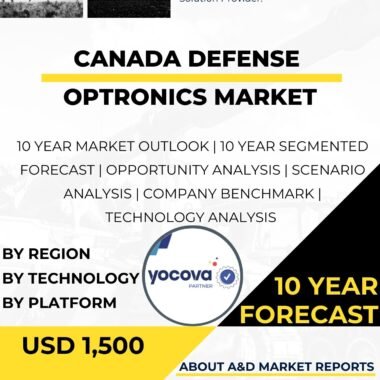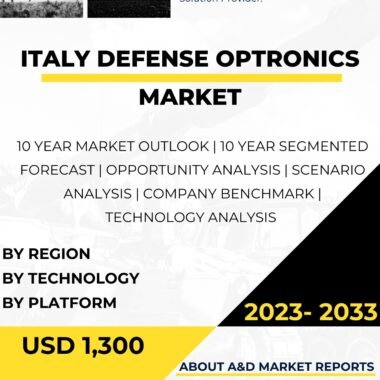Description
Optronics, a term derived from “optoelectronics,” refers to the use of optical and electronic components to develop advanced defense technologies. In the context of military applications, optronics play a crucial role in enhancing situational awareness, target acquisition, and overall combat effectiveness. France has been a pioneer in the development and deployment of state-of-the-art defense optronics, leveraging its expertise in optics, electronics, and precision engineering to create cutting-edge systems for its armed forces.
One of the primary applications of defense optronics is in the field of surveillance and reconnaissance. France has developed a wide range of optronic systems, including electro-optical and infrared sensors, night vision devices, and thermal imaging cameras. These optronics enable military personnel to detect and identify potential threats in various environments, including low-light conditions and adverse weather.
One notable French optronic system is the JIM (Jumelle Infrarouge Multifonction) family of multifunction infrared binoculars. These binoculars integrate thermal imaging capabilities, laser rangefinders, and digital compasses, providing soldiers with a comprehensive situational awareness tool. The JIM series has been widely used by French forces for reconnaissance, target designation, and intelligence gathering on the battlefield.
France has also invested in the development of optronic systems for armored vehicles and aircraft. For instance, the Galix self-protection system equips armored vehicles with optronic sensors capable of detecting incoming threats, such as anti-tank guided missiles. When a threat is detected, Galix deploys smoke grenades to obscure the vehicle and thwart the missile’s guidance system, enhancing the vehicle’s survivability.
In the aviation domain, France has integrated optronics into various aircraft, including fighter jets and helicopters. Optronic targeting pods, such as the Damocles and Talios, enable pilots to identify and engage ground and air targets with precision-guided munitions. These pods offer high-resolution imaging, laser designation, and target tracking capabilities, enhancing the effectiveness of French military aircraft in both reconnaissance and strike missions.
Beyond the battlefield, defense optronics also play a vital role in border surveillance and homeland security. France faces challenges in monitoring its extensive coastline and land borders, making optronic sensors invaluable for detecting illegal border crossings, smuggling activities, and potential security threats. Optronic systems mounted on drones and surveillance towers offer cost-effective solutions for continuous monitoring and rapid response.
Additionally, France has capitalized on its optronics expertise to develop advanced fire control systems for its ground-based artillery and naval vessels. These fire control systems integrate high-precision optronic sensors, laser rangefinders, and ballistic calculators to ensure accurate targeting and efficient engagement of hostile assets. The optronic fire control systems significantly enhance the firepower and operational capabilities of the French Army and Navy.
Furthermore, optronics technology has contributed to the development of sophisticated countermeasures against various threats. France has devised laser dazzlers that can temporarily impair the vision of hostile forces or unmanned aerial systems (drones). These non-lethal, directed-energy weapons are designed to deter adversaries and protect friendly forces without causing permanent harm.
The development of defense optronics in France has been possible through close collaboration between the government, defense industries, and research institutions. Public-private partnerships have facilitated the exchange of expertise, resources, and funding required for research and development efforts. French defense companies, such as Thales, Safran, and MBDA, have been at the forefront of optronics innovation, delivering cutting-edge solutions for military applications.
With the growing importance of data-driven decision-making on the modern battlefield, France has also integrated optronics with artificial intelligence (AI) and data processing capabilities. AI algorithms analyze and interpret the vast amounts of data collected by optronic sensors, providing real-time insights and automating certain tasks. This fusion of optronics and AI has accelerated the decision-making process and improved the overall effectiveness of military operations.
However, with the proliferation of advanced optronic systems globally, France faces challenges in maintaining a competitive edge. Ensuring that its defense optronics remain at the forefront of technology requires continuous investment in research and development. Moreover, the ever-evolving nature of modern warfare demands a focus on adaptability and the integration of optronics with other emerging technologies.
In conclusion, France’s defense optronics capabilities have positioned the country as a leader in leveraging cutting-edge optical and electronic technologies for military applications. These optronic systems have significantly enhanced situational awareness, target acquisition, and overall combat effectiveness for the French Armed Forces. From surveillance and reconnaissance to fire control systems and countermeasures, optronics have become indispensable components of France’s defense arsenal. By continuing to invest in research, development, and innovation, France aims to maintain its technological edge and ensure the readiness of its armed forces for the challenges of the future battlefield.




